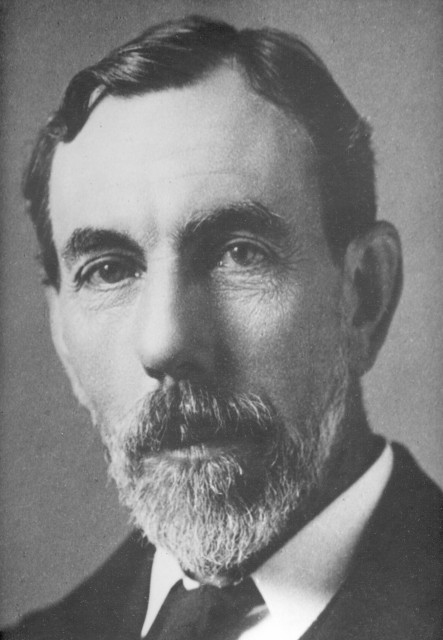Sir William Ramsay
1852-1916

Henry Cavendish noted in 1785 that when an electric spark was passed through air, causing the nitrogen and oxygen to combine, a small residue, about 1%, of inert gas remained. This observation was explained a century later when Ramsay and Lord Rayleigh (John William Strutt) discovered and characterized a new element, argon, in the air. Ramsay went on to discover others of the Group VIII elements, helium, neon, krypton and xenon, and received the 1904 Nobel Prize in Chemistry. Ramsay learned the art of glass blowing which enabled him to construct the specialized laboratory equipment needed for his exacting research.
Sponsor: Keki Mistry
Location in chemistry building: First Floor; Room 136 North Wall; Sequence 1
Source: Kedzie Collection